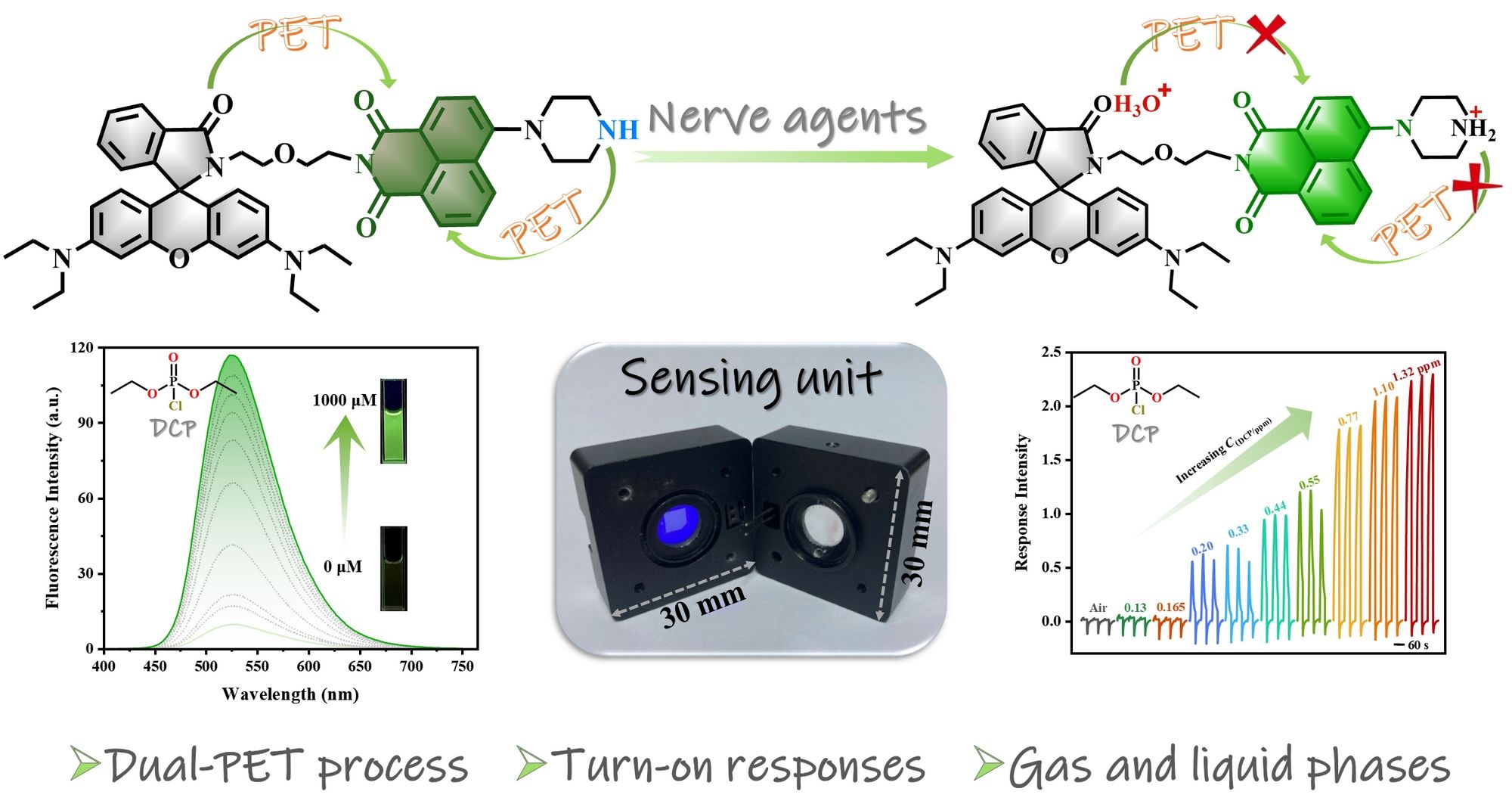
Rongxin Wang, Shanshan Liu, Xubin Wang, Molin Qin, Zhen Yan, Min Qiao*, Liping Ding*, Jinglin Kong, and Yu Fang. Chem Asian J. 2025, e202401491. DOI: 10.1002/asia.202401491.
Nerve agents (NAs) are highly toxic organophosphorus (OP) compounds that are often used in terrorist attacks and wars to threaten national security and public health. For the sake of public safety and citizen health, the development of efficient and portable detection devices to nerve agents is critical.

Figure 1. Schematic diagram of the mechanism for OPs detection

Figure 2. (a) Calculated distributions and energies of frontier molecular orbitals for RNI-P and RNI-P-H3O+ in water. Schematic illustration of the PET process upon the photoexcitation of RNI-P: (b) in the absence of H3O+; (c) in the presence of H3O+.
In this investigation, a naphthalimide-rhodamine based dual-chromophore, RNI-P, was synthesized and applied to detect nerve-agent mimic diethyl chlorophosphate (DCP) and real nerve agents. The probe exhibits inherently weak fluorescence due to the PET processes from both piperazine and rhodamine units to the naphthalimide unit. It shows rapid fluorescence enhancement to DCP in aqueous solution, demonstrating exceptional sensitivity and selectivity. Furthermore, the probe-inked paper strip can also rapidly respond to DCP vapor when integrated into a lab-made portable sensing platform. the paper strip can show significant fluorescence enhancement for DCP as low as 130 ppb within a minute, and can effectively detect DCP vapor at even lower concentration (66 ppb) by adjusting the testing conditions. Most notably, the probe is capable of quickly and effectively detecting real nerve agents such as sarin and soman in aqueous solution, highlighting its significant potential for practical use. It was proved that the fluorescence enhancement is attributable to the inhibition of the PET process from both piperazine and rhodamine units to the naphthalimide unit, triggered by the protonation of RNI-P with DCP hydrolysis product. This study reveals that not only the usual nucleophilic groups but also a second fluorophore can cause effective PET process to the core chromophore and empowers the probe with strong potential for efficient detection of nerve agents.
Therefore, this research presents a highly efficient, rapid responding, and repeatable sensor for the detection of nerve agents in both aqueous solutions and gas phases, offering a viable option for the portable detection of nerve agents in practical applications.
First Author: Wang Rongxin, master’s student, Shaanxi Normal University
Correspondence Authors: Prof. Ding Liping and Postdoc Qiao Min, Shaanxi Normal University
Full text Link: https://doi.org/10.1016/j.snb.2024.137162